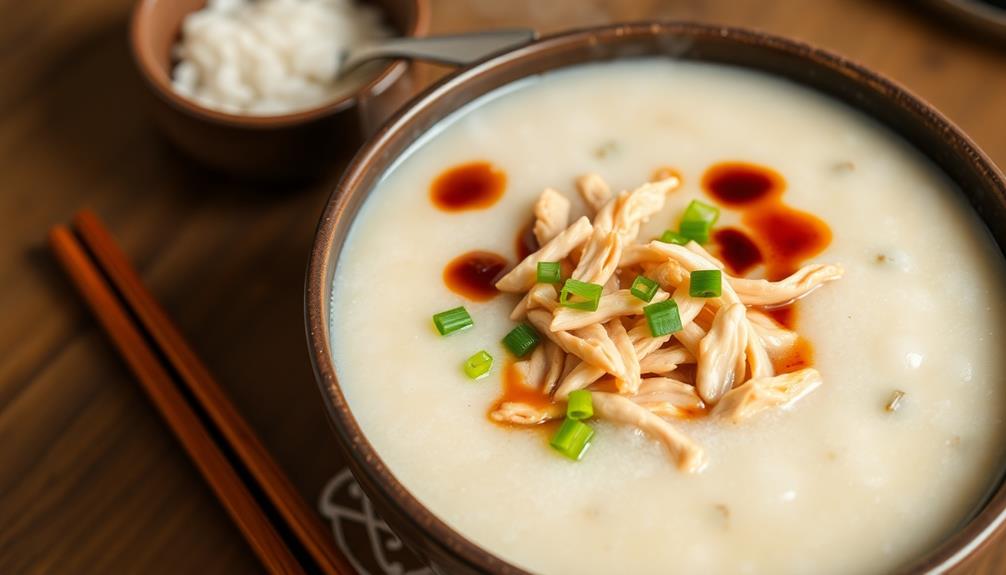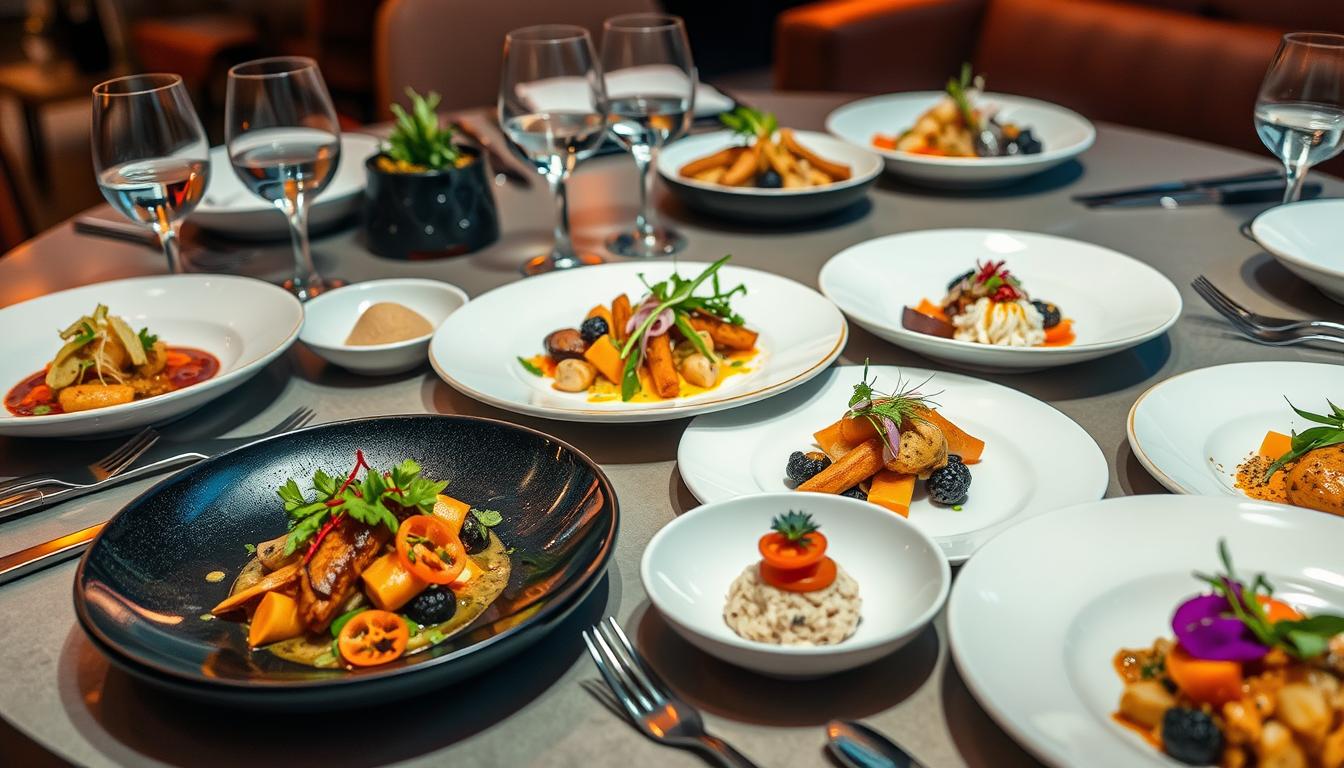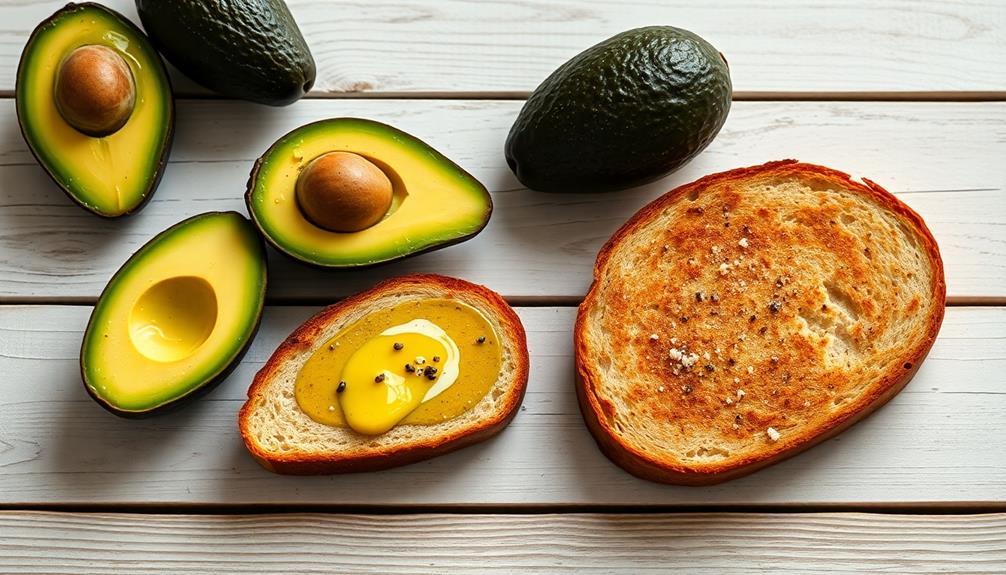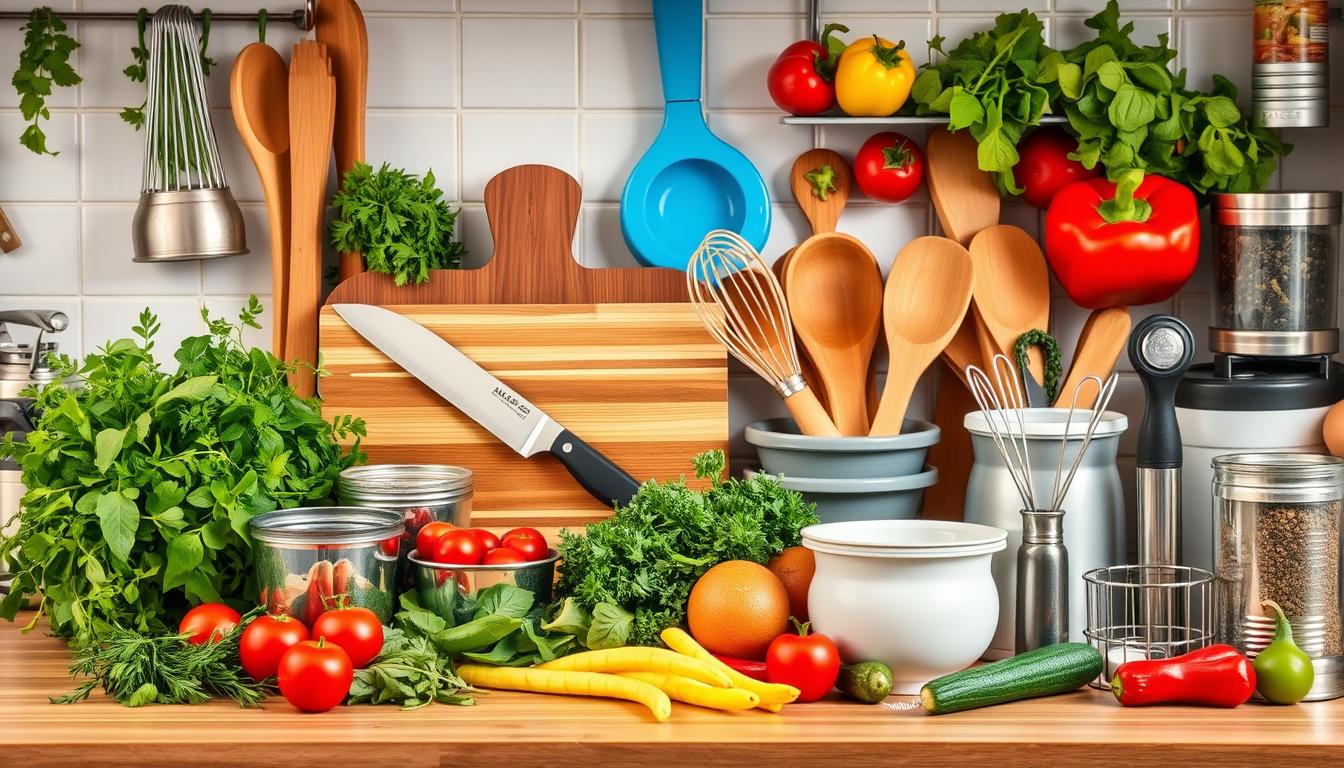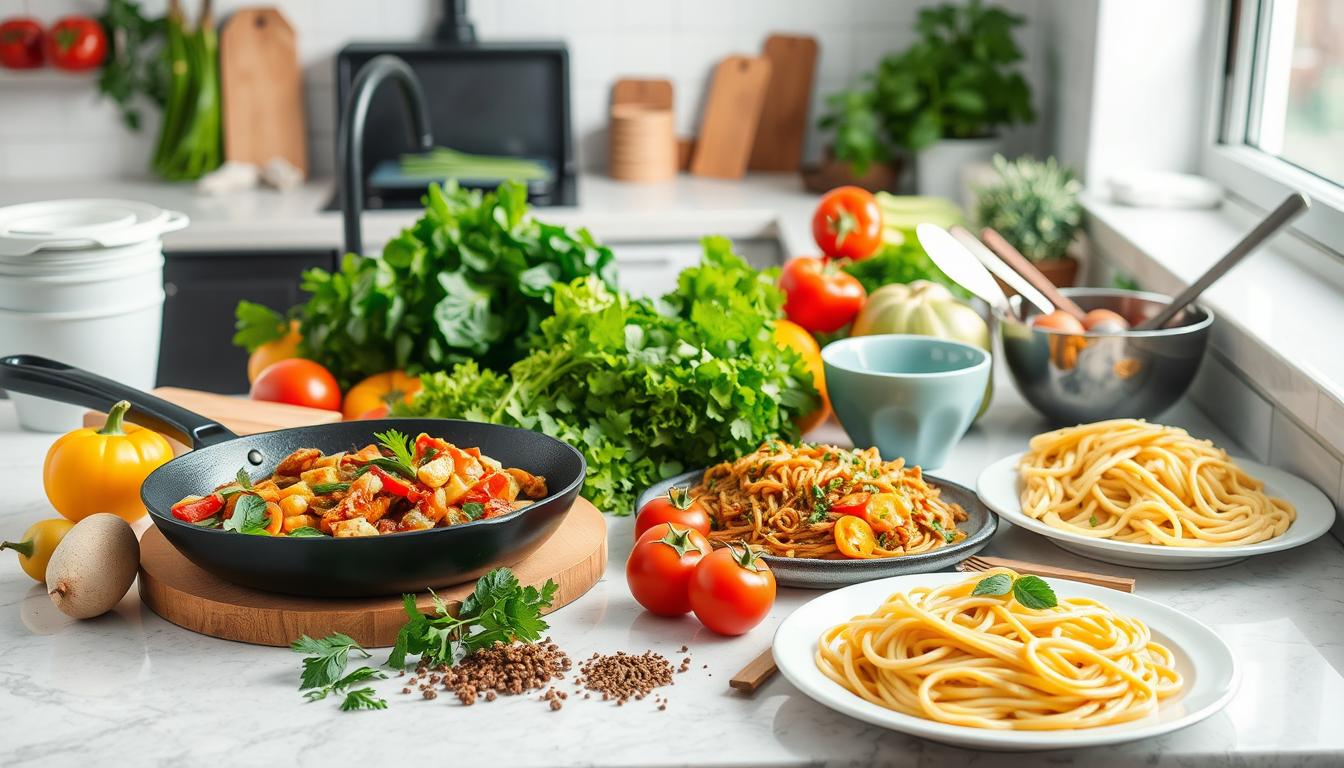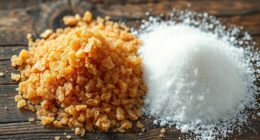Congee, the comforting and versatile rice porridge, has nourished palates across Asia for over 2,000 years. This ancient dish evolved from a simple staple for the poor into a celebrated part of diverse culinary traditions. Hailing from China, Japan, and Korea, congee offers a creamy, customizable delight – whether you top it with salted eggs and preserved meats, or season it with soy sauce and scallions. Packed with carbohydrates and easily digestible, congee's warming goodness makes it perfect for all ages. Dive deeper into this beloved Asian staple to discover its rich history and delightful regional variations.
Key Takeaways
- Congee, a rice porridge, has its origins in ancient Asian cuisines, particularly in China, Japan, and Korea, dating back over 2,000 years.
- Congee is rich in carbohydrates, easily digestible, and can be fortified with proteins and vegetables, making it a healthy meal option.
- The cooking process involves rinsing the rice, boiling, and simmering, with the texture being creamy and soothing, suitable for any meal.
- Congee serves as a symbol of comfort and home in many Asian cultures, often enjoyed during celebrations and family gatherings.
- Numerous regional adaptations exist across Asia, with variations in ingredients and flavors, showcasing the dish's versatility across different cultures.
History
Congee, the humble rice porridge, has long been a staple in many Asian cuisines, tracing its origins back centuries. This comforting dish has been a part of the culinary traditions of China, Japan, Korea, and other countries for thousands of years.
Its roots can be found in ancient Chinese texts, where it was revered for its nourishing properties and ease of digestion. Over time, congee evolved, with different regions developing their own unique recipes and flavor profiles.
In China, congee is often topped with savory accompaniments like salted eggs, preserved meats, or pickled vegetables. Meanwhile, in Japan, it's known as okayu and may be seasoned with soy sauce, mirin, and scallions.
No matter the variation, congee has remained a beloved comfort food, providing a warm and soothing meal that's both satisfying and versatile.
Recipe
Congee is a comforting and versatile rice porridge that has been a staple in Asian cuisines for centuries. This nourishing dish is easy to prepare and can be customized to suit various tastes and dietary preferences.
The creamy and soothing texture of congee makes it a perfect meal for any time of the day. Whether you're seeking a warm and comforting breakfast or a light and satisfying lunch, congee is sure to hit the spot.
Ingredients:
- 1 cup short-grain rice
- 8 cups water
- 1 inch ginger, peeled and sliced
- 1 teaspoon salt
Instructions:
In a large pot, combine the rice, water, and ginger. Bring the mixture to a boil over high heat, then reduce the heat to low, cover, and simmer for 30-40 minutes, stirring occasionally, until the rice has broken down and the porridge has thickened to your desired consistency.
Stir in the salt and adjust seasoning as needed.
When cooking congee, it's important to be patient and allow the rice to break down completely. This process can take some time, but the result is a rich and creamy porridge that's well worth the wait.
You can also experiment with different garnishes, such as sautéed mushrooms, crispy fried shallots, or a soft-boiled egg, to add both flavor and texture to your congee.
Cooking Steps
First, rinse the rice until the water runs crystal clear.
Then, add the rice and water to your pot and let it simmer for 45 to 60 minutes, stirring occasionally, until you reach your desired congee consistency.
Step 1. Rinse Rice Until Water Runs Clear

Rinsing the rice is an essential first step in preparing the perfect congee. You'll want to place the rice in a fine-mesh strainer and run it under cool, fresh water. Gently swish the rice around with your fingers, allowing the water to become cloudy. Keep rinsing until the water runs clear – this helps remove any excess starch, ensuring your congee has the right texture.
Once the rice is rinsed, you're ready to move on to the next step. Adding the water and simmering the rice is where the magic really happens!
Cooking the rice low and slow is key to achieving that wonderfully creamy, comforting congee. Just be patient and let the rice do its thing.
Before you know it, you'll have a steaming hot bowl of congee, perfect for customizing with your favorite toppings. Get ready to savor every last bite of this nourishing Asian staple!
Step 2. Add Rice and Water
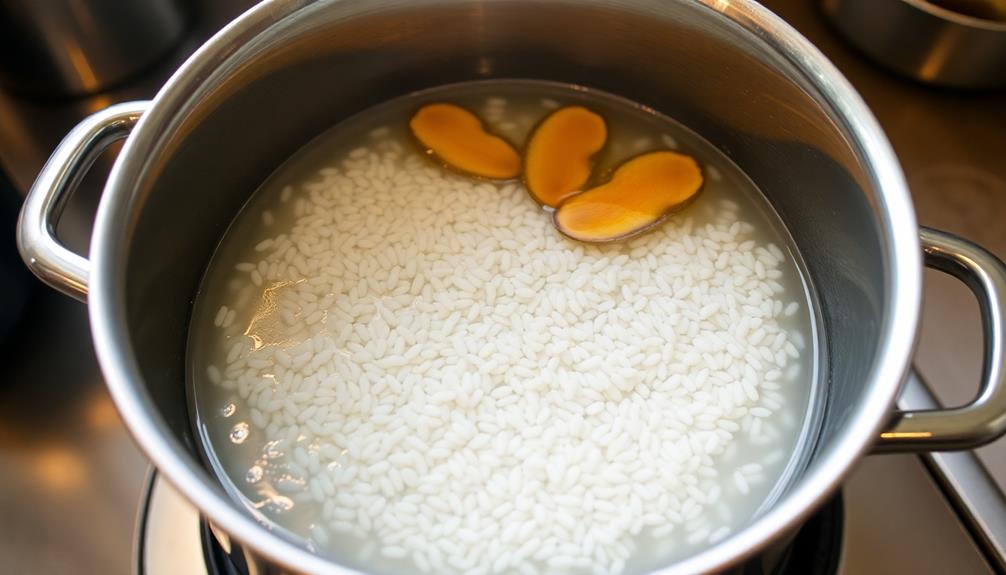
Now that you've rinsed the rice, it's time to add the water and let the cooking commence. In a large pot, pour in the water and bring it to a boil over high heat.
Once the water is boiling, add the rinsed rice. Stir the mixture briefly to prevent the rice from sticking to the bottom of the pot.
Reduce the heat to low and let the congee simmer. You'll want to keep a close eye on it, stirring occasionally to ensure the rice doesn't stick or burn.
As the rice cooks, it will start to break down, creating a thick, creamy porridge. Adjust the heat as needed to maintain a gentle simmer.
The cooking time can vary, but it's typically around 45 minutes to an hour. You'll know the congee is ready when the rice has completely softened and the mixture has reached your desired consistency.
At this point, you can turn off the heat and serve the comforting congee warm, topped with your favorite toppings.
Step 3. Simmer for 45-60 Minutes
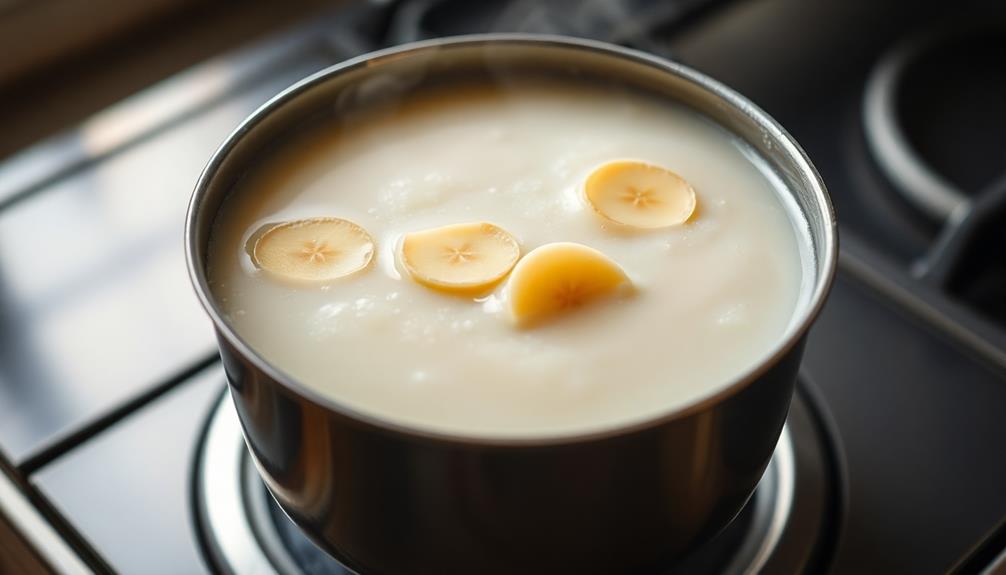
Once the rice is added, it's time to let the congee simmer. Grab a heavy-bottomed pot and bring the rice and water mixture to a gentle boil over medium heat.
Once it's bubbling, reduce the heat to low and let the congee simmer for 45-60 minutes, stirring occasionally. This slow, steady cooking process is key to creating the porridge's signature creamy, luscious texture.
As the congee simmers, you'll notice it gradually thickening. Don't be tempted to crank up the heat – slow and steady is the way to go.
Periodically give the pot a stir, making sure the rice doesn't stick to the bottom. After 45-60 minutes, the congee should have a wonderfully smooth, porridge-like consistency.
You can adjust the thickness by adding more water if it gets too thick, or letting it simmer a bit longer if you prefer an even creamier texture.
Step 4. Stir Occasionally Until Desired Consistency

As the congee gently simmers, be sure to stir it occasionally to prevent the rice from sticking to the bottom of the pot.
This gentle stirring will help the congee develop its signature smooth and creamy texture. You'll want to use a wooden spoon or a heatproof spatula to gently fold the congee, making sure to reach the corners of the pot.
Don't stir too vigorously, as you don't want to break down the rice grains. The key is to maintain a gentle, consistent motion, stirring every 5-10 minutes.
Keep an eye on the consistency, adding more broth or water if the congee becomes too thick. You're aiming for a porridge-like texture that's creamy and comforting.
As you stir, you'll notice the rice breaking down and the congee thickening. Continue this process until you reach your desired consistency, which can take up to an hour of simmering and stirring.
Patience is the key to perfectly cooked congee.
Step 5. Garnish With Desired Toppings

With the congee now at your desired consistency, it's time to start garnishing it with your favorite toppings!
The great thing about congee is that it's a blank canvas, allowing you to get creative and customize it to your taste.
You might want to try adding some salty and savory elements, like crispy fried shallots, roasted peanuts, or a sprinkle of soy sauce.
Or, if you're in the mood for something a little more fresh and vibrant, top it with sliced scallions, pickled ginger, or a squeeze of fresh lime juice.
For a protein boost, consider shredded chicken, sliced beef, or even a soft-boiled egg.
The options are endless! Just remember to mix and match different textures and flavors to create a truly satisfying and comforting bowl of congee.
Experiment and have fun with it – that's the best part of this versatile dish.
Final Thoughts
Congee, the timeless rice porridge, remains a culinary beacon in the hearts of many. This humble dish has the power to transport you on a flavorful journey through Asia, offering comfort and nourishment in every spoonful.
Whether you're enjoying a steaming bowl on a chilly day or savoring it as a soothing start to your morning, congee is a true joy to behold.
As you've discovered, the beauty of congee lies in its versatility. By experimenting with different garnishes and flavor profiles, you can endlessly customize this dish to suit your personal preferences.
From savory morsels to sweet accents, the possibilities are endless. Embrace the freedom to make congee your own, and let it become a beloved staple in your culinary repertoire.
As you continue to explore the wonders of this timeless porridge, remember that the true essence of congee lies in the comfort and contentment it brings. Its versatility knows no bounds, allowing you to create a bowl that reflects your personal tastes and preferences. Imagine blending the soothing warmth of congee with the savory delight of full English breakfast ingredients, melding cultures in a single, satisfying dish. From crispy bacon to earthy mushrooms and baked beans, congee becomes a canvas for endless culinary creativity.
Frequently Asked Questions
What Is the Best Time of Day to Eat Congee?
The best time of day to eat congee is whenever you crave a comforting, nourishing meal. Whether it's for breakfast, lunch, or dinner, congee's versatility makes it a satisfying choice any time you need a warm, soothing dish.
Can I Add Eggs or Meat to My Congee?
You can absolutely add eggs or meat to your congee. The savory ingredients will complement the mild flavor of the rice porridge and make it a more satisfying and nutritious meal.
How Long Can I Store Leftover Congee?
You can store leftover congee in the refrigerator for up to 4-5 days. Be sure to store it in an airtight container, and reheat it thoroughly before serving to ensure food safety.
Is Congee Gluten-Free?
Yes, congee is gluten-free. It's made primarily from rice, which naturally doesn't contain gluten. As long as you don't add any gluten-containing ingredients to your congee, it's a safe and delicious option for those following a gluten-free diet.
What Are Some Popular Congee Toppings?
Some popular congee toppings include savory options like shredded chicken, salted eggs, pickled vegetables, and crispy fried onions. You can also go sweet with toppings like sliced fruit, toasted nuts, and a drizzle of honey.
